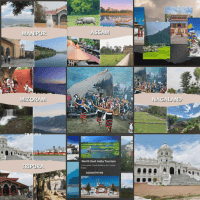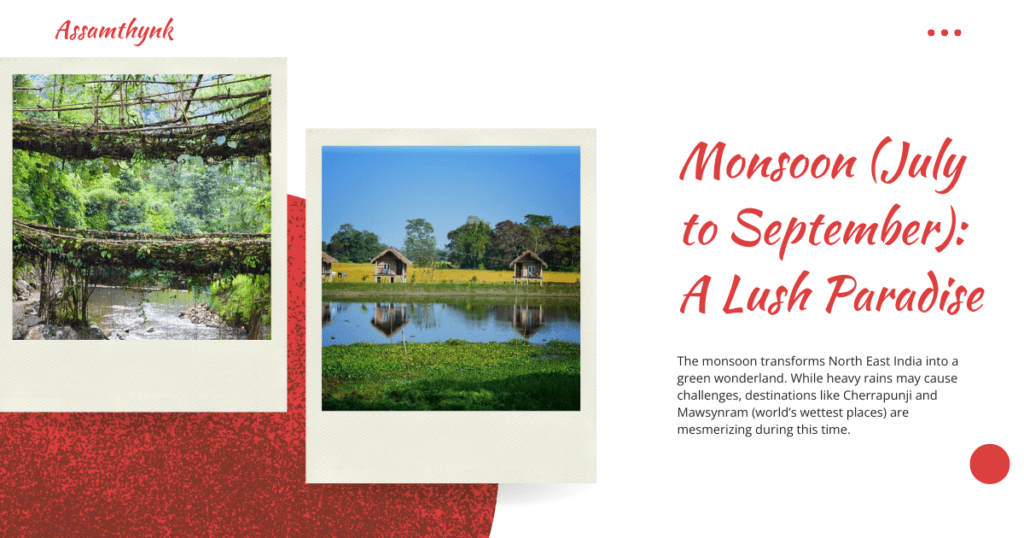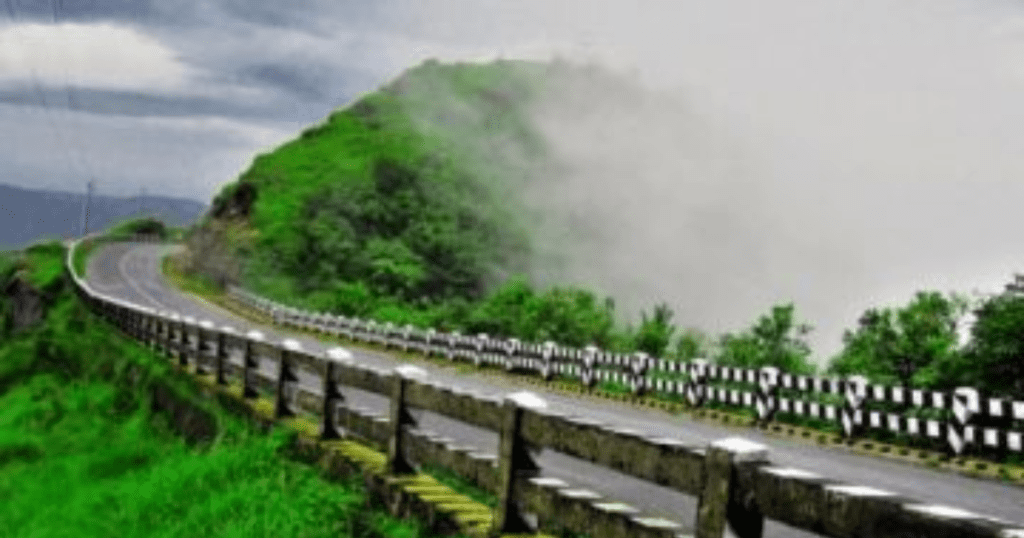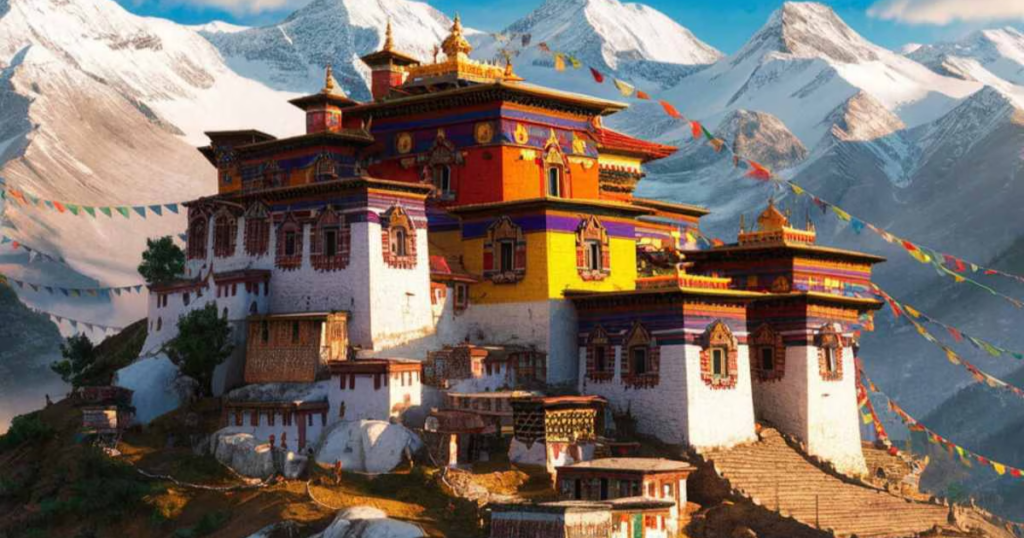Introduction
This comprehensive travel guide will help you plan your trip to the Seven Sister States, including how to reach, top tourist attractions, best time to visit, food, culture, travel tips, and more.
How to Reach North East India
By Air:
- Lokpriya Gopinath Bordoloi International Airport (Guwahati, Assam), Lengpui Airport (Mizoram), Imphal Airport (Manipur), and Dibrugarh Airport (Assam).
- Guwahati is the main gateway to North East India with direct flights from Delhi, Kolkata, Mumbai, and Bangalore.
By Train:
- Guwahati, Dibrugarh, Dimapur, and Silchar are the key railway stations.
- Well-connected to major cities across India.
By Road:
- National highways and state transport buses connect all the states.
- Shared taxis and private cabs are widely available within states.
Best Time to Visit
The best time to visit North East India is from October to May. During these months, the weather is pleasant, skies are clear, and the landscapes are lush and vibrant. Winter (October to February) is ideal for sightseeing, festivals, and cultural experiences, especially in states like Assam, Nagaland, and Manipur. The famous Hornbill Festival (Nagaland) and Yaoshang (Manipur) are celebrated during this time.
Spring (March to May) is perfect for exploring the natural beauty of Meghalaya, Sikkim, and Arunachal Pradesh, with blooming flowers and refreshing weather. It’s also a great time for trekking in valleys like Dzúkou and visiting waterfalls such as Vantawng.
Avoid the monsoon season (June to September) due to heavy rainfall, which can cause landslides and disrupt travel. Plan your trip between October and May for the best overall experience across the Northeast region.
1. Arunachal Pradesh – The Land of the Rising Sun
Arunachal Pradesh, known as the Land of the Rising Sun, is one of the most serene and picturesque states in Northeast India. With its snow-capped mountains, Buddhist monasteries, and untouched natural beauty, Arunachal offers a soul-stirring experience for every traveller.
Tawang Monastery
Tawang Monastery is the largest monastery in India and the second-largest in the world. Perched at an altitude of 10,000 feet, it is a major pilgrimage site for Mahayana Buddhists. The monastery houses ancient scriptures, a massive golden Buddha statue, and offers mesmerizing views of the Tawang Valley.
Ziro Valley
A UNESCO World Heritage Site nominee, Ziro Valley is home to the Apatani tribe and known for its lush green fields, pine forests, and pleasant climate. It is also famous for the Ziro Music Festival, one of India’s most unique outdoor music events that draws artists and visitors from around the world.
Bomdila
A peaceful hill station offering stunning views of the Eastern Himalayas, Bomdila is perfect for nature lovers. The town features monasteries, apple orchards, and vibrant markets.
Sela Pass
Located at 13,700 feet, Sela Pass is a high-altitude pass that connects Tawang to the rest of Arunachal. It remains snow-covered most of the year and is surrounded by over 100 scenic lakes.
2. Assam – The Gateway to Northeast India
Assam, the heart of Northeast India, is renowned for its rich biodiversity, tea plantations, spiritual heritage, and vibrant festivals. While Dispur is the official capital, Guwahati serves as the cultural and commercial hub of the state. Assam offers a perfect blend of nature, wildlife, spirituality, and tradition.
Kaziranga National Park:
A UNESCO World Heritage Site, Kaziranga national park is home to the world’s largest population of one-horned rhinoceroses. It also offers thrilling jeep and elephant safaris through vast grasslands and wetlands.
Majuli River Island:
The world’s largest river island, Majuli is located on the Brahmaputra river and is known for its satras (Vaishnavite monasteries), culture, and natural beauty.
Kamakhya Temple:
Sivasagar:
A historical town showcasing the legacy of the Ahom dynasty through monuments like Rang Ghar, Talatal Ghar, and Sivadol.
3. Manipur – The Jewel of the East
Manipur, a picturesque state nestled in the lap of Northeast India, is blessed with tranquil lakes, vibrant culture, and historic monuments. With Imphal as its capital, Manipur is a lesser-explored gem that offers a unique blend of nature and heritage.
Loktak Lake and Sendra Island:
Loktak, the largest freshwater lake in Northeast India, is known for its phumdis (floating biomass) and scenic Sendra Island. It’s a photographer’s paradise and a haven for birdwatchers.
Kangla Fort:
Situated in the heart of Imphal, Kangla Fort is a symbol of Manipur’s royal past and cultural pride. It houses ancient temples, colonial ruins, and sacred monuments.
Shree Govindajee Temple:
INA Memorial at Moirang:
This historic site commemorates the Indian National Army led by Netaji Subhas Chandra Bose. Nearby lies the peaceful Santhei Natural Park, ideal for a relaxing walk amidst nature and lush landscapes.
4. Meghalaya – The Abode of Clouds
Meghalaya, meaning “the abode of clouds,” is one of the most enchanting states in Northeast India. Known for its misty hills, cascading waterfalls, ancient caves, and rich tribal culture, Meghalaya is a paradise for nature lovers and adventure seekers. Its capital, Shillong, often referred to as the “Scotland of the East,” is a vibrant hill station with colonial charm.
Cherrapunji and Mawsynram:
These towns hold the title of the wettest places on earth, offering lush green landscapes, monsoon experiences, and famous waterfalls like Nohkalikai and Seven Sisters Falls.
Living Root Bridges:
Found mainly in Cherrapunji and Nongriat, these bio-engineered wonders made from rubber tree roots are unique to the Khasi tribes and are often several centuries old.
Dawki River and Umngot:
Famous for its crystal-clear waters, Dawki near the India-Bangladesh border offers serene boat rides where boats appear to float on air.
Mawlynnong:
Voted the cleanest village in Asia, Mawlynnong is a model of community-driven cleanliness and eco-tourism.
5. Mizoram – Land of the Blue Mountains
Mizoram, nestled in the southernmost corner of Northeast India, is known for its rolling hills, vibrant tribal culture, and scenic landscapes. With Aizawl as its capital, the state offers a peaceful retreat for those seeking serenity, adventure, and cultural richness. Mizoram is home to diverse tribal communities, primarily the Mizos, who are known for their hospitality and vibrant festivals.
Lalsavunga Park:
Lalsavunga Park A popular eco-tourism destination near Aizawl, this park offers panoramic views, ziplining, a skywalk, and family-friendly activities set amid lush greenery.
Phawngpui (Blue Mountain):
The highest peak in Mizoram, located in the Phawngpui National Park, is famed for its scenic beauty, orchids, and birdwatching trails.
Vantawng Falls:
Reiek Tlang:
Reiek A hill near Aizawl, offering trekking trails, a heritage village, and panoramic views of the surrounding hills and valleys.
6. Nagaland – Land of Festivals and Warriors
Nagaland, located in the far northeast of India, is a culturally vibrant state known for its proud tribal heritage, rugged landscapes, and colorful festivals. The capital Kohima is not only historically significant but also a gateway to the traditions and beauty that define this region. The state’s unique charm lies in its unspoiled natural beauty, indigenous culture, and warm hospitality.
Hornbill Festival:
Held every December in Kisama Heritage Village near Kohima, this “Festival of Festivals” showcases the cultural richness of all 16 major tribes through dance, music, crafts, and cuisine.
Dzúkou Valley:
A breathtaking Dzúkou valley located on the border of Nagaland and Manipur, known for seasonal wildflowers, rolling meadows, and panoramic treks.
Kohima War Cemetery:
A beautifully maintained memorial commemorating soldiers who died during World War II’s Battle of Kohima.
Khonoma Green Village:
India’s first green village, known for eco-friendly practices, sustainable tourism, and the heroic stories of resistance against British rule.
7. Tripura – A Blend of Heritage and Natural Beauty
Tripura, the third smallest state in India, is tucked away in the northeastern region and offers a rich tapestry of royal heritage, ancient temples, serene lakes, and archaeological wonders. The capital city, Agartala, reflects a charming fusion of Bengali and tribal cultures and serves as the cultural and administrative heart of the state.
Ujjayanta Palace:
A stunning white-domed palace built by Maharaja Radha Kishore Manikya, now a museum showcasing Tripura’s royal past and cultural heritage.
Neermahal Water Palace:
Situated in the middle of Rudrasagar Lake, this majestic red-and-white summer retreat is a blend of Hindu and Mughal architecture.
Tripura Sundari Temple:
One of the 51 Shakti Peethas, this temple dedicated to Goddess Tripura Sundari is an important pilgrimage site surrounded by scenic beauty.
Unakoti Rock Carvings:
A unique archaeological site with massive rock-cut sculptures of Hindu deities dating back to the 7th–9th centuries, nestled amidst lush hills.
Culture and Festivals
Bihu (Assam)
Hornbill Festival (Nagaland)
Celebrated every December in Kisama near Kohima, the Hornbill Festival is Nagaland’s grandest cultural event. It brings together all 17 Naga tribes to showcase traditional music, dances, handicrafts, and cuisine. Known as the “Festival of Festivals,” it promotes inter-tribal unity and preserves Nagaland’s vibrant indigenous heritage.
Chapchar Kut (Mizoram)
Wangala (Meghalaya)
Wangala is a post-harvest festival celebrated by the Garo tribe of Meghalaya, usually in November. It honours Saljong, the Sun God of fertility and harvest. The festival is marked by rhythmic drum beats, traditional dances like the “Hundred Drums Wangala,” and people dressed in vibrant tribal attire, showcasing rich cultural heritage and unity.
Losar (Arunachal Pradesh)
Yaoshang (Manipur)
Travel Tips (Listing Style)
Permits Required:
- ILP (Inner Line Permit) needed for:
- Arunachal Pradesh
- Nagaland
- Mizoram
- Available online.
- ILP (Inner Line Permit) needed for:
Connectivity:
- Mobile and internet may be limited in remote areas.
- Download offline maps in advance.
Cash vs Card:
- Carry sufficient cash.
- ATMs and card facilities are limited in rural zones.
Respect Local Culture:
- Dress modestly.
- Always ask before taking photos of locals or tribal events.
Local Transport Options:
- Shared sumos (jeep taxis)
- State/private buses
- Hired private taxis
- Roads can be challenging—plan for delays.
Conclusion
Plan your journey with this complete travel guide and get ready to unlock the untouched charm of India’s Northeast.
Q: Do I need a permit to visit North East India?
A: Yes, Inner Line Permits (ILPs) are required for Arunachal Pradesh, Nagaland, and Mizoram. These can be obtained online.
Q: What is the best time to visit North East India?
A: October to April is ideal due to pleasant weather and festivals.
Q: Is North East India safe for tourists?
A: Yes, it is generally safe. However, always follow local guidelines and respect regional customs.
Q: How do I reach North East India?
A: Major airports include Guwahati (Assam), Imphal (Manipur), and Bagdogra (for Sikkim). Trains and buses are also available.
Q: What are the must-see attractions in North East India?
A: Kaziranga National Park, Tawang Monastery, Cherrapunji, Dawki, Hornbill Festival, and Loktak Lake.
Q: Is English spoken in North East India?
A: Yes, English is widely spoken along with Hindi and regional languages.
Q: What kind of food is available in North East India?
A: Mostly local tribal dishes, rice-based meals, and pork, but Indian, Chinese, and continental options are available in cities.
Q: Can I travel solo in North East India?
A: Yes, solo travel is possible and rewarding, especially with good planning and local contacts.
Q: How many days are enough for a North East India tour?
A: Ideally 10–15 days to explore 2–3 states in depth. For a complete tour, plan 3–4 weeks.




Real superb information can be found on site. “I don’t know what will be used in the next world war, but the 4th will be fought with stones.” by Albert Einstein.